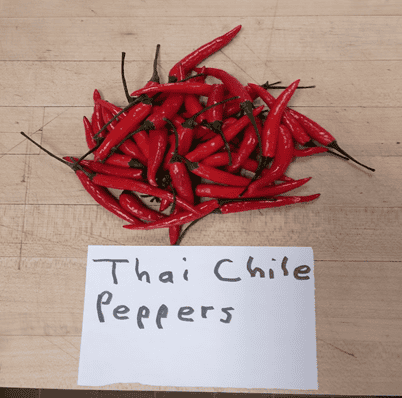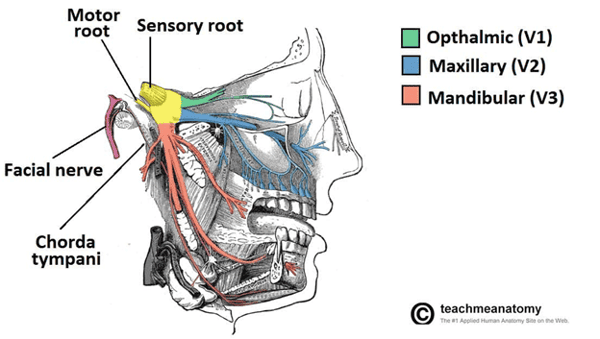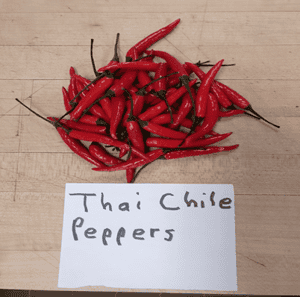
Get ready to embark on a journey of culinary exploration that will reveal the unsung hero of our taste experience, the trigeminal nerve. This often-overlooked fifth sense plays a profound role in our enjoyment of food, enriching our dining experiences. So, put on your apron and join me on this journey into the intricate world of taste, flavor, and the marvel of the trigeminal nerve.
To truly appreciate the trigeminal nerve's role in our culinary adventures, let's first understand its significance. The trigeminal nerve, as its name suggests, consists of three branches of nerves—ophthalmic (scalp, forehead, nose), maxillary (roof of mouth, sinuses, temples), and mandibular (lower jaw, tongue, and ear)—that cover a broad range of the head and face. These branches are responsible for carrying sensory information from your face to your brain.
Throughout human evolution, the trigeminal nerve played a crucial role in our survival. It allowed our ancestors to detect and react to temperature changes, the texture of food, and even potentially dangerous substances. It signaled the presence of spoiled or toxic foods, helping us avoid harm and survive in a world fraught with culinary challenges.

The Fantastic Five Senses
We are all familiar with the classic five senses - sight, hearing, touch, smell, and taste. Yet, the world of culinary cuisine research delves much deeper than just flavor, introducing us to an intricate web of sensory experiences that come together to create the ultimate dining adventure. Our focus today is on taste, specifically the multifaceted nature of this sense and the critical role played by the trigeminal nerve.
Taste is not limited to the basic sweet, sour, bitter, and salty sensations. It encompasses a spectrum of experiences, from the tactile qualities of texture to the nuanced differences in temperature. The trigeminal nerve, a network of nerves responsible for tingling, numbing, and cooling sensations, adds layers of complexity to your culinary journey. It is also the reason we experience brain freezes!
Common Foods that Trigger the Trigeminal Nerve
Some common foods that engage the trigeminal nerve and deliver a tantalizing sensory experience are:
Chili Peppers: Whether it's in a spicy Thai curry or a Mexican salsa, chili peppers contain capsaicin, a compound that ignites the trigeminal nerve and sets your taste buds on fire!
Wasabi: This pungent green paste is a staple in Japanese cuisine and delivers a powerful sinus-clearing experince, thanks to allyl isothiocyanate.
Mint: Minty dishes and beverages like peppermint tea or mint chocolate chip ice cream provide a refreshing coolness, courtesy of menthol.
Horseradish: A classic accompaniment to roast beef, horseradish offers a fiery kick that stimulates the trigeminal nerve.
Ginger: Whether in a zesty stir-fry or a soothing cup of ginger tea, ginger provides a subtle tingling sensation on your palate.
Cinnamon: This warm and earthy spice, often found in desserts and baked goods, imparts a pleasant, tingling heat.
The Experience
As a chef, my primary goal is not just to serve a meal but to craft a memorable dining experience. It's about taking you on a sensory journey that leaves you with a contented smile. The culinary journey is not just about the taste; it's about the full sensory adventure. Skillfully combining these sensations results in a symphony of flavors that dance on your taste buds, creating an experience that lingers in your memory.
Feeling the Burn: Spices and the Trigeminal Nerve
Spices are the stars of the culinary world, and the trigeminal nerve is their stage. When you savor a mouthful of a fiery curry or a dish laced with pepper, it's the trigeminal nerve that sets your mouth ablaze. This complex relationship between pleasure and a touch of pain keeps us coming back for more, even if it means reaching for a glass of water.

Texture Tango: Crispy, Crunchy, and Chewy
Texture is an often-underappreciated aspect of cuisine that can elevate or diminish a dish's appeal. The trigeminal nerve serves as the conductor orchestrating your brain's interpretation of these textures. The crispiness of fries, the crunch of nuts, or the satisfying chewiness of candies—all these sensations are integral to the symphony happening inside your mouth.
 The Cool Kids: Mint and Menthol
The Cool Kids: Mint and Menthol
Have you ever encountered a minty sensation that leaves you saying, "Ah, that's refreshing!"? That's the trigeminal nerve at play. Foods infused with menthol, like mint or spearmint, deliver a cool, soothing experience that contrasts beautifully with the spicier and warmer sensations in your culinary journey. It's akin to an Arctic breeze on a scorching summer day, a contrast that tantalizes the senses.
 In conclusion, the trigeminal nerve is the uncelebrated hero of our culinary adventures, adding layers of excitement and nuance to every bite. Understanding its influence can deepen our appreciation for the intricacies of the gastronomic world. So, fellow food enthusiasts, I encourage you to embrace the tingles, the fiery bursts, and the refreshing winds that grace your palate. Remember, food is more than sustenance; it's a journey, and each meal can be a unique adventure.
In conclusion, the trigeminal nerve is the uncelebrated hero of our culinary adventures, adding layers of excitement and nuance to every bite. Understanding its influence can deepen our appreciation for the intricacies of the gastronomic world. So, fellow food enthusiasts, I encourage you to embrace the tingles, the fiery bursts, and the refreshing winds that grace your palate. Remember, food is more than sustenance; it's a journey, and each meal can be a unique adventure.
The next time you take a bite, pause for a moment... and savor the complexity of sensations that unfold on your taste buds. Appreciate the contrast between spicy and cool, crisp and chewy, and allow the trigeminal nerve to guide you on this remarkable culinary journey.
In the end, it's not just about what's on the plate but the story it tells through the sensations it evokes. Food is a celebration of life, and every bite is a chance to explore new dimensions of flavor. So, keep experimenting in the kitchen, savor every bite, and cherish the joy of dining.
If you want to learn more about how our senses interact with each other and get a deeper understanding of flavors, check out our class called Flavor Dynamics which occurs regularly. In this class, you’ll learn the difference between taste and flavors and how to use you’re knowledge of taste to adjust dishes to be perfectly balanced on the palate.

